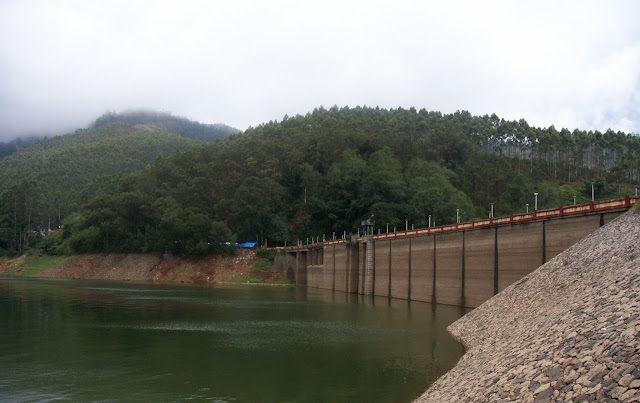Visiting the
beautiful countryside of Kerala with its lush green cover was always a source
of immense happiness and joy for us as children. We would start planning for the annual trip
much in advance.
Kerala is a
completely different visual experience from any other part of India. We should prepare ourselves to behold the
beauty of the green paddy fields lined with coconut trees, sloping and curving
up, waving at them with its huge long leaves.
The rivers and ponds scattered with water lilies and lotus. Little white egrets, herons and storks can
all be seen standing in the fields to pick up their treats from the water
below. There would be all kinds of birds
perched up on trees and the electric lines.
Some of the ponds would have a swarm of ducks wading and quacking
around. We were quite lucky to spot some kingfishers
near the ponds perched up on a tree once.

When we used
to go to Kerala during our summer vacations as children, we would get busy with
our cousins. It was a getting together
of friends who meet once every year for a few days. Our days would start off with making
excursions to the paddy fields lined with streams of water. It used to be difficult walking through the
siders and our legs would keep going into the mud and slush. As children who are not accustomed to these
areas, we would have to catch hold of our cousins and walk after them
slowly. They were more comfortable as
they were used to walking on these slushy areas. The more slowly we would walk, the deeper our
legs would go into the wet soil. There
used to be a lot of fishes, tiny ones and small ones wading in those
streams. We would carry bottles and
plastic covers to catch these little tiny creatures. By the time we all came back from our escapades,
we would all be wet from head to toe.
Everyone of us would be scolded and shooed off to clean up and take a
bath by our parents. It was fun watching
those little fishes wade in our bottles with clear water for days after that.
As children,
we used to take our bath out in the open.
There would be a platform created near the well and it was a community
bathing experience! We would have a
bucket and a pulley tied at the top of the well. It was fun when we had to gather water from
the well using these. We would throw
down the bucket tied with a rope and looped through the pulley. When the bucket hit the water deep down, it
used to make a loud noise and then we used to peek down to see the bucket
slowly vanishing into the water and then getting submerged. This was our indication that we had to pull
the bucket right up with filled up water.
Pulling on the rope used to be an effort, but each of us wanted to show
our might and therefore, we used to take turns to do it and would want to do it
the maximum no. of times. We would lift out the bucket with the water and pour
it into bigger buckets or else splash it on the others standing around. And there would be so much squeals of
laughter and mirth. And then our parents would come and scold us for pulling out more water than was needed. It was another task for the parents to get us all
out of our bathing trips.

Once clean
and in a little presentable state, we would head towards the kitchen from where
lovely aroma would be wafting out. For us who were coming from Delhi, Kerala
delicacies prepared in abundance of coconut was a treat! We would all sit down in a row on the floor and
have our meal, sometimes in the traditional way of eating in Kerala, on banana
leaf. These days, though the experience has become rare. Though the elders used a plate, we
would insist on having food in banana leaves.
The lunch would be served by the ladies of the house with lots of
koottaans (vegetable accompaniments), curries and papadams with rice. Rice in Kerala is usually the thick red rice. We would make a little hole in the middle of
the rice for the curries and then top it with ghee. It would be like a little pond and children
loved to play even while they were eating.


Every day
there were different things to do and experiment. Our cousins used to take pride in showing off
and we were quite eager to just learn from them with all the excitement and
wonder. Our grandmother used to have
cows and calves bound in a shed called Eruthil.
Early morning someone from the house would be busy milking the cow and
the children all sitting around watching the process. Then they would play with the little calf
that was deprived of his meal for the sake of these children. There would be hens and lot of chicks. They would have to be released early morning
from their little house called the "kozhikoodu". The chicks were fed with broken rice. For city dwellers like us, these little chores
were all new experiences and we would want to do all these things with the
elders.
Some days we
would go on an excursion to the open fields where lots of tapioca plants were
planted. There used to be lots of small
dragonflies which they would call ‘Thumbi’.
Our cousins would catch them and tie their tail to a long thread and
then they would make it fly and we would all follow the Thumbi’s.
 |
| The Tapioca Plant |
 |
| Tree with Jackfruit |
 |
| The pepper plant |




















































